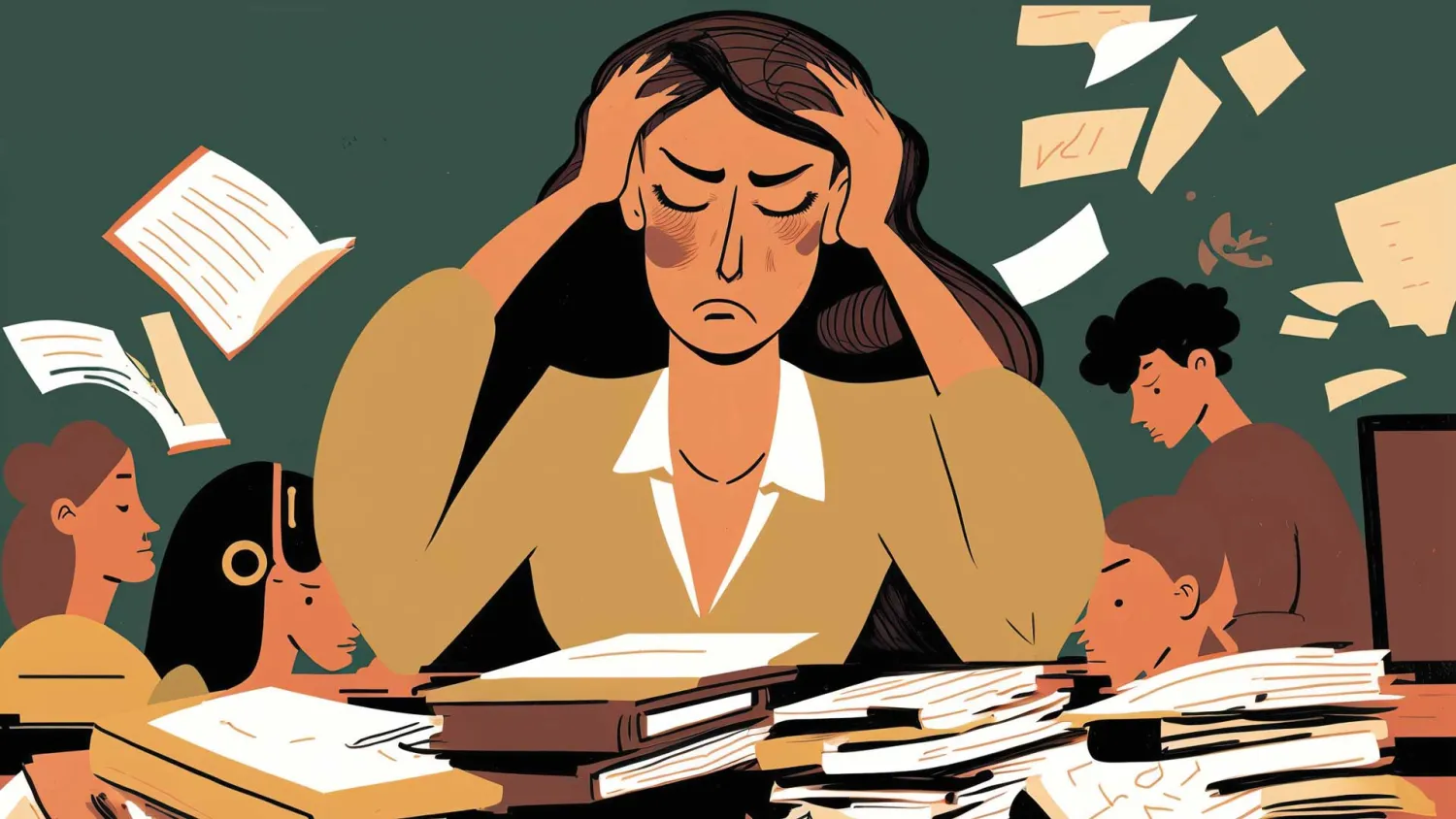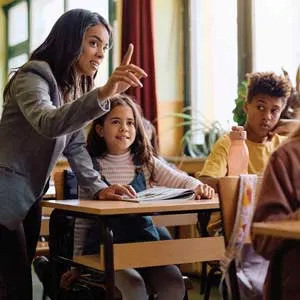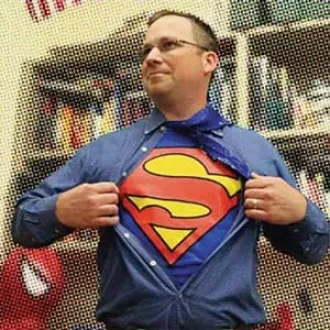Meet The 2025 National Teacher of the Year
Ashlie Crosson, an English teacher in Lewistown, Penn., has been named the 2025 National Teacher of the Year by the Council of Chief State School Officers.
Crosson’s story is a testament to the impact educators can have on their students’ lives. As the 2025 National Teacher of the Year, Crosson will spend a year representing educators and serving as an ambassador for the teaching profession.
“It feels like a big responsibility, but it’s also this incredible chance to share my kids and community with our country,” she told CBS Mornings.
“Ashlie embodies our core belief that public schools and educators spark imagination, cultivate curiosity and critical thinking, and open doors for every student,” said NEA President Becky Pringle.
Quote byAshlie Crosson , National Teacher of the Year

A passion for journalism
Crosson teaches English 10 and Advanced Placement language and composition at Mifflin County High School. She’s also a member of the Association of Mifflin County Educators, the Pennsylvania State Education Association, and NEA.
Growing up in Lewistown, Crosson found inspiration in her teachers and counselors and dreamed of teaching English in her hometown.
Later, as a first-generation college student, she earned her bachelor’s degree in English with a minor in journalism from Pennsylvania’s Susquehanna University. She went on to earn a master’s degree in educational leadership at Penn State as well as a gifted endorsement from Pennsylvania’s Millersville University.
In 2020, Crosson returned to her hometown where her passion for teaching and journalism helped shape the work she is doing today. After reviving the journalism program at her school, Crosson began advising the production of the school newspaper and district magazine, respectively.
Former student Mina Phillips told CBS Mornings that Crosson taught her everything she knows about writing. “Miss Crosson [is] a huge part of who I am professionally,” said Phillips, who now writes for Lewistown’s local newspaper, The Sentinel.
A global perspective
In 2018, Crosson participated in the yearlong Fulbright Teacher for Global Classrooms Program, which trains educators to equip students with a global perspective. The fellowship helped Crosson reframe curricula to foster students’ global citizenship. She also teaches Survival Stories, an elective that looks at global humanitarian crises from a youth perspective.
“I aim to cultivate a classroom where all students feel empowered to succeed and to become informed, compassionate individuals who are prepared to navigate the complexities of our global society.”
—Takier George

Working Conditions Are Still a Challenge
Working conditions are a top issue for teachers across the country, according to a recent study by University of Missouri researchers Sofia P. Baker and Cory Koedel.
The study found that teacher working conditions have declined significantly in the last few years, especially around key indicators of safety, student disruptiveness, innovation, the quality of classroom discussions, and trust among teachers, parents, and administrators.
The rate of the decline was the same at schools with high and low rates of student poverty—although teachers at wealthier schools reported better working conditions overall. And the rate of decline was worse at schools that stayed online longer during the pandemic, especially on issues of trust and on some student-focused measures, such as the quality of student discussions and reflective dialogue.
So, what’s driving these declines? “We don’t have data into what exactly is causing teachers to report that their working conditions are deteriorating,” Koedel says. “But the data is certainly consistent with it being more difficult for teachers to manage their classrooms.”
But through their unions, NEA members are addressing these issues. They are winning smaller class sizes in Washington state; additional duty-free time in Massachusetts; and more funding to hire specialized educators who work on student behavior and mental health. Local and state unions have also won greater professional autonomy. Learn more about improving your working conditions in the “Know Your Rights” special section.
Starting Teacher Salaries Increase

According to the 2025 NEA Teacher Salary Benchmark Report, released in April, the national average beginning teacher salary was $46,526—a 4.4 percent increase over the previous year. That’s the largest increase in the 15 years that NEA has been tracking teacher salary benchmarks. However, inflation over the past 16 years has eroded salary increases, so inflation-adjusted starting salaries are now $3,728 less than during the 2008 – 2009 school year. The percentage of school districts paying new teachers a starting salary of at least $50,000 increased significantly to 30 percent, up from 23.2 percent in the prior year.

AI Deepfakes: A Disturbing Trend In School Cyberbullying
“Deepfakes” have been making their way into middle schools and high schools across the country.
A deepfake, as defined in NEA’s policy statement on the use of artificial intelligence (AI) in education, is an “AI-generated image, video, or audio file that convincingly replaces one person’s likeness and/or voice with another person’s.”
These deepfakes, along with “revenge porn” (non?consensual distribution of sexually explicit images), doxing (sharing private information about someone), and swatting (prank calls to emergency services), have a severe impact on students’ lives and their mental health.
The number of AI deepfakes have been growing, and more students—mostly girls—are being exposed to them, says Laura Tierney, the founder and CEO of The Social Institute, which educates people on responsible social media use. In a 2024 Education Week survey, two-thirds of educators reported that their students had been misled by deepfakes.
“One photo posted online is all that’s needed to create a deepfake, so this is an issue that can impact nearly every student,” Tierney says.
—Kalie Walker
Quote by—Tim Smyth , High school social studies teacher in Pennsylvania


We Want to Hear from You
Stay Informed We'll come to you

